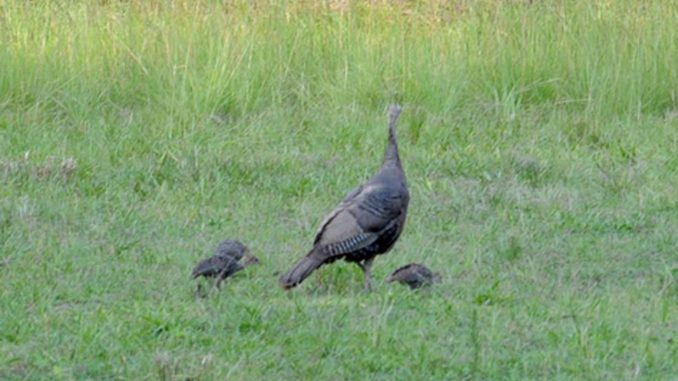
Annual brood survey reveals strong turkey hatch, SCDNR says.
Turkey hunters have a lot of be thankful for, if the 2011 summer brood survey conducted by the South Carolina Department of Natural Resources is correct. The outlook for the upcoming season is great, with the number of poults being counted almost as good as in 2010 – which enjoyed the best hatch in several years, SCDNR’s Charles Ruth said.
“This is the first time since 2001 and 2002 that we’ve had positive recruitment numbers for consecutive years,” Ruth said. “This certainly enhances the outlook for a good harvest in the 2012 turkey season. We already have a good number of birds that were jakes in the 2011 season in the population, and now we have a good crop of young birds in 2011.”
Click here to view a chart showing regional results of the survey.
The results of the annual brood survey were only slightly lower than last year, Ruth said.
“Reproduction in 2010 was the best in a number of years, and although indicators were not quite as strong in 2011, the indicators remained good this year,” he said. “The average brood size of 4.2 poults, and the total recruitment ratio of 2.3 were down only slightly from last year – the best year since 2004.”
Ruth explained that recruitment ratio is a measure of young entering the population based on the number of hens in the population. This year’s solid figures were driven by the second-lowest percentage of hens that had no poults (46 percent) in six years. At the regional level, it appears that reproduction was good in most of the state, with the lower coastal plain being an exception.
Ruth said he is unsure why reproduction in turkeys improved the past two years.
“In the Southeast, Mother Nature often plays a big role in turkey populations, with heavy rainfall coupled with cool temperatures during the spring nesting and brood-rearing season leading to poor reproductive success,” he said. “Reproduction was generally poor between 2005 and 2009; however, it has been much better the last two years.
“It is difficult to say that there was anything related to the weather that contributed to the previous decline or recent improvement in reproductive success.”
Ruth said the back-to-back good hatches should have a positive impact on the 2012 harvest, and likely 2013 also.
“Harvest trends have followed the trends in reproduction in recent years, and we saw a slight increase in harvest in the 2011 spring season (that) coincided with the better reproduction in 2010,” he said. “With two successive years of better reproduction, the number of turkeys available during the spring of 2012 season should the best in a number of years.
“More importantly, the number of mature gobblers, 2-year-old birds, should be the highest we have seen for a while.”
Another positive note is that the gobbler-to-hen ratio remained good, with a statewide average of 0.76, the highest in five years.
“Many experts believe that when the gobbler-to-hen ratio get below 0.5, the quality of hunting can be impacted because hens are extremely available, which affects gobbling and responsiveness to calling by hunters,” he said.
“The bottom line is the type of reproduction we have had the last two years is exactly what we need to overcome less-than-desirable reproduction in previous years.
“That is the nice thing about turkeys: Given the right conditions, they can naturally bounce back in a short period of time.”




Be the first to comment